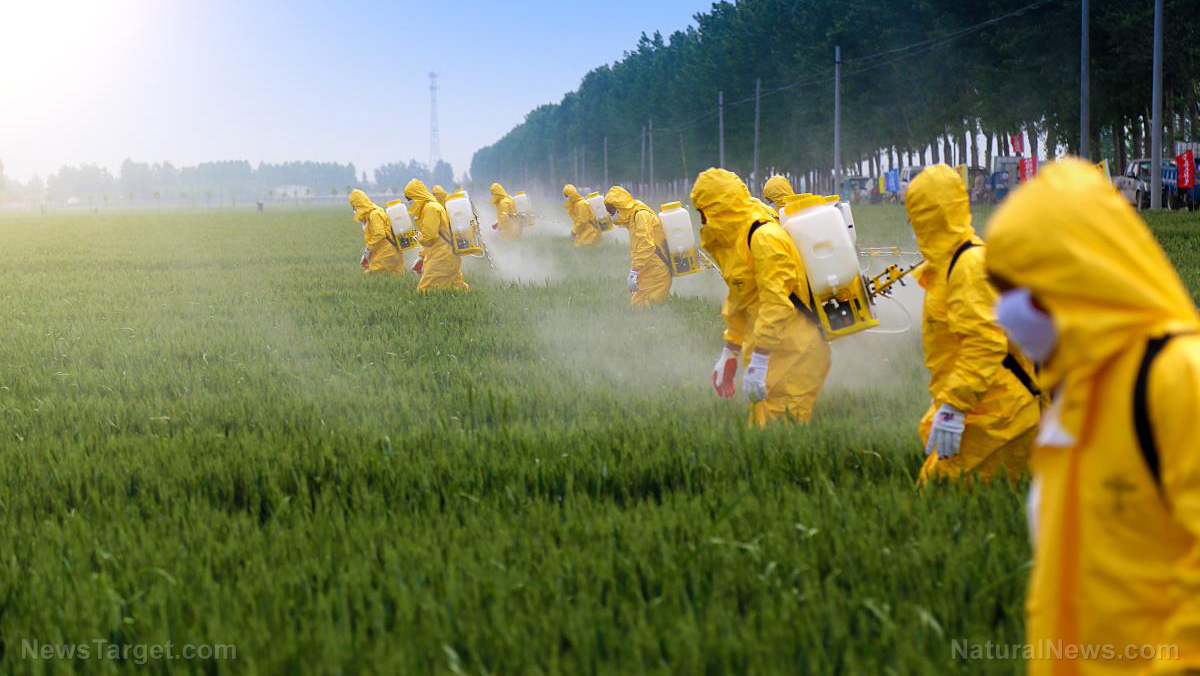Lawsuits piling in against Syngenta over paraquat weedkiller, which causes Parkinson’s Disease
04/16/2021 / By Ethan Huff

Attorneys representing numerous plaintiffs in multiple lawsuits filed against Swiss chemical giant Syngenta have asked a U.S. judicial panel to consolidate all of them, which suggests there are many more on the way.
At issue is the company’s weedkiller chemical paraquat, which was determined to cause Parkinson’s Disease. Plaintiffs say the noxious concoction made them gravely ill and now they want damages for their injuries.
According to reports, at least 14 different lawsuits have been filed against Syngenta by eight different law firms in six different federal courts. Consolidating them all into one, lawyers say, would help move the process along, especially if many more plaintiffs file suit.
“The cases are excellent candidates for coordinated pretrial proceedings because they arise from the same poisonous toxin causing the same crippling disease resulting from the wrongful conduct of the same three defendants,” reads a brief from the Texas-based law firm Fears Nachawati.
“Movant expects that the number of similar cases filed in state and federal courts across the country will expand rapidly.”
The motion seeks to transfer the consolidated cases to Judge Edward Chen in the U.S. District Court for the Northern District of California because Fears Nachawati expects that the size and scope of the overall litigation “will be significant and material in nature.”
“Very soon, there is going to be litigation in dozens of federal courts across the country,” the firm explained.
EPA also complicit for allowing Syngenta to keep selling poisonous crop chemicals
Syngenta has an extensive history of spreading deadly chemicals all over American crop land with the express permission of the Environmental Protection Agency (EPA).
Back in 2019, the company was let off the hook by the EPA despite illegally spraying “restricted use chemicals” on crops in Hawaii.
In addition to paraquat, these chemicals include alachlor, atrazine, chlorpyrifos, methomyl, metolachlor and permethrin.
Syngenta was supposed to have paid out some $4.8 million in settlement money to cover those who were injured or killed by its products. Instead, the EPA let the company off with a measly $150,000 settlement, which is nothing compared to the massive profits the company has taken in from the sale of these poisons.
In the new cases, lawyers are seeking to obtain internal corporate documents from Syngenta related to the “testing, design, labeling, marketing, and safety of paraquat herbicides,” along with corporate research and evaluations of the toxicity and safety of all Syngenta products that contain paraquat.
The Virginia-based Miller Firm, which helped lead Roundup cancer litigation against Monsanto that resulted in an $11 billion settlement with Monsanto owner Bayer AG, is also joining in on the litigation against Syngenta.
“The Miller firm supports the effort to consolidate the federal actions in California, where thousands of Roundup cases were also consolidated for pretrial proceedings, according to the firm’s lead attorney Mike Miller,” reports The Defender, a newsletter of Children’s Health Defense (CHD).
Miller says it is confident that the science strongly supports a causal connection between paraquat and Parkinson’s disease. Further, the Northern District of California “is well equipped to handle these cases,” the firm says.
The cases against Syngenta also name Chevron Phillips Chemical Co. as a defendant since that company distributed and sold Gramoxone paraquat products in the U.S. through an agreement with a Syngenta predecessor called Imperial Chemical Industries (ICI).
The paraquat-based Gramoxone product was introduced by Chevron Phillips back in 1962 under a license agreement that gave the company permission to manufacture and sell paraquat formulations in the U.S.
Both Syngenta and Chevron of course deny that paraquat is anything other than “safe and effective” for its various approved uses.
More related news about toxic crop chemicals can be found at ChemicalViolence.com.
Sources for this article include:
Submit a correction >>
Tagged Under:
Bayer, Chevron Phillips, disease causes, lawsuits, Monsanto, paraquat, Parkinson's Disease, Syngenta, toxic chemicals
This article may contain statements that reflect the opinion of the author
RECENT NEWS & ARTICLES
COPYRIGHT © 2017 POISON NEWS

















